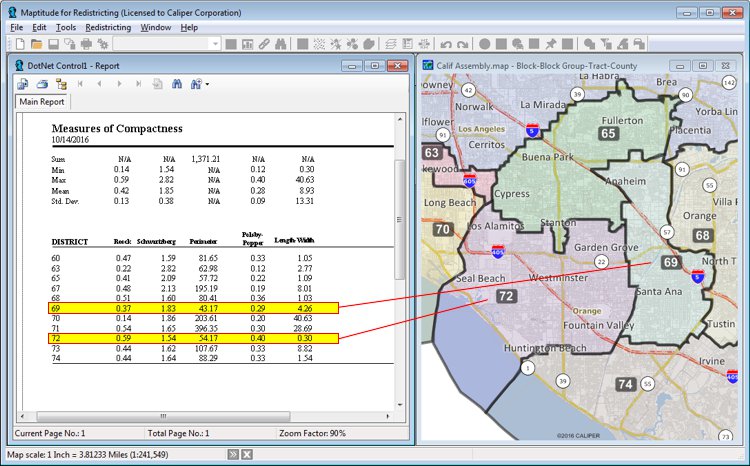Mapping Software and GIS Glossary
A district that is not compact may be considered gerrymandered. For this reason, a number of measures of compactness have been devised to assess or defend the districts in a plan. These measures aim to quantify how compact or dispersed a district is.

Maptitude for Redistricting is the easy to use, professional tool for political redistricting. Maptitude for Redistricting computes nine measures of compactness:
